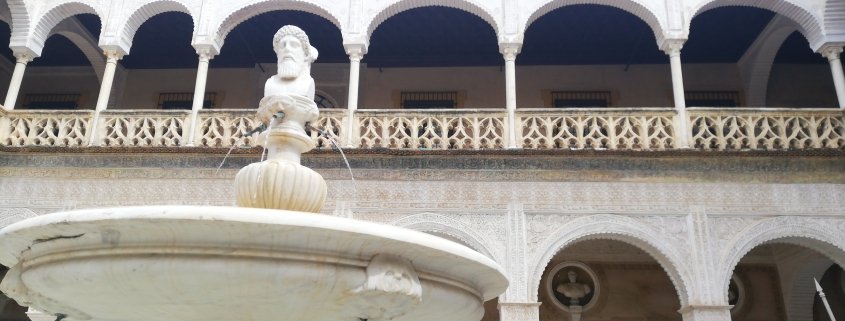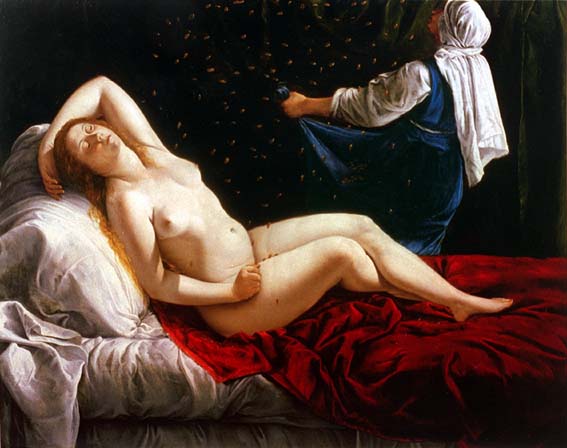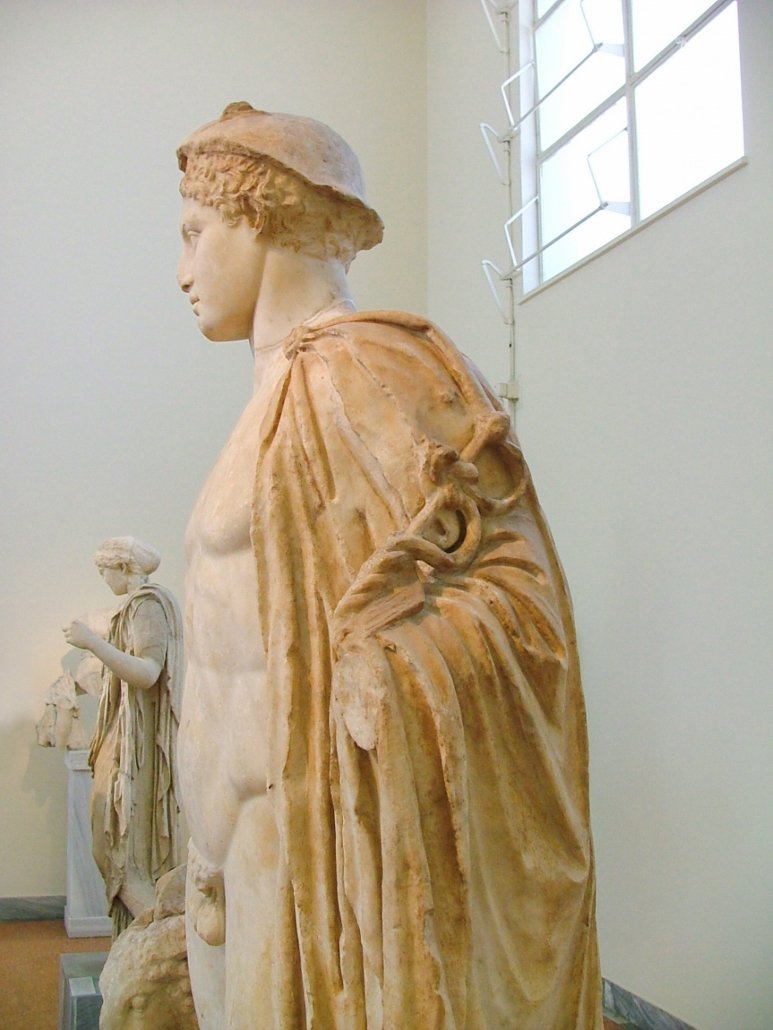3 palaces of Seville and classical mithology
In the 3 main palaces of Seville we can find a beautiful decoration telling us the stories of gods and godesses of Rome and Greece. How can it be possible with the huge influence of the Church in the city in the old days? Read this article to know more about this.
The Catholic tradition in the art of Seville is very powerful as you well know. For lovers of painting and sculpture, we are familiar with the Christs, saints, virgins Mary and biblical scenes that since the Middle Ages have decorated not only religious but also secular monuments in our city.
Seville in the 16th and 17th centuries was flooded with churches and convents to combat the Protestant reform and left little space for other non-religious artistic manifestations.
However, one of the features of the Renaissance and also of the Baroque is that an attempt to return to Ancient times. Greek and Roman mythology became popular especially from Italy. But also the court in Madrid for the fondness of the Austrian monarchs quickly joined this fashion.
Thus, Charles V and the very pious Philip II were lovers of mythological art. They hired Titian or Rubens to decorate the palaces of the Spanish capital with gods and goddesses of Olympus.
But what about Seville? here the clientele of the artists was almost exclusively the Roman Catholic Church so there was not much room for different themes, but there was something.
The city of Seville itself would have been mythically founded by Hercules, a demigod.
It is then that myth meets History. And although some versions make a legendary Phoenician merchant named Hercules-Melkart the founder of the city, others speak directly of the god Hercules who was sent to the Hesperides, to the far western border, to carry out some of his famous works. He was specifically commissioned to steal the oxen of Gerion, the king of Tartessos. Meanwhile, Hercules had time, among other things, to found our Hispal city, that would be later Seville.
Today we can see an statue our hero in the Arch of the town hall. And also at the top of the columns of the square Alameda de Hercules.
But it was above all the nobles who, in imitation of what was happening in Italy, decorated their beautiful Renaissance palaces with classical myths. These are some examples that we can see in the main palaces of Seville.
Palaces of Seville 1. The Casa de Pilatos
A mythological theme also referred to Hercules was represented by a Sevillian painter that we would never imagine. He was Francisco Pacheco, overseer of the Inquisition, a painter who established in his treatises how religious figures should be painted in order not to depart from Catholic orthodoxy. But he is also the author of portraits and occasionally of mythological scenes as we see in this beautiful ceiling.
In one of the halls of the upper floor of the Casa de Pilatos we can see represented the Apotheosis of Hercules, that is, the rise of Hercules to heaven. Hercules was the son of Zeus and Hecuba, he was therefore not immortal, but he achieved this immortality by his own heroic merits. Painting the hero, Pacheco wanted to make a parallel with his client, the III Duke of Alcalá: Don Fernando Enríquez de Ribera, a perfect Renaissance man and lover of everything Italian.
Another daughter of Zeus is Athena, born from the head of Zeus. We have this formidable warrior goddess in this Palace of Pilate. We actually have two, one with weapons called belligera and the other unarmed, called pacifera. They are two versions of the same character, one as a goddess of war but also of the opposite of her peace. The giant sculpture is made of marble, 4 meters high, brought by the founder of the palace from Italy and is largely a Greek original, although the arms and the head were added later.
And in the main courtyard of this palaces of Seville we find a beautiful Renaissance fountain at the top of which stands the god Janus. He is an exclusively Roman god. Janus is the god of doors, of beginnings and endings. That is why he has two faces and they awarded him the opening of the year, one of his faces looks at the previous year and the other at the future.
In fact, the month of January owes its name to this god. Janus-Januarius-January. He is a god who ensures good endings and also Janus is the father of Fontus the god of fountains. You can see it in this video that we have made of the Art series in ONE minute (in Spanish).
Palaces of Seville 2. The Palace of Dueñas
And changing the palace we are located in Casa de Alba, that is, in the Seville downtown. it’s Las Dueñas, one the palaces of Seville recently opened to the public.
There we find Hermes, son of Zeus and therefore brother of Athena. We have it as the protagonist of the most valuable tapestry in Seville, in fact it is considered one of the ten best in the world and we are lucky to have it in our city.
It represents the episode of Mercury in love with Herse, in which Mercury flies over the landscapes of Attica while contemplating the King’s daughters and falls in love with one of them, it is from the 16th century and was made by the prestigious Austrian tapestry maker, Willem Pannemaker. Click on this video (in Spanish) to admire it in all its splendor.
Palaces of Seville 3. The Palace of Lebrija
The palace of Lebrija is one of the palaces of Seville with a richest decoration. And here we have Zeus, the supreme god, father of the Olympian gods in a beautiful mosaic in the Lebrija palace.
This mosaic comes from Italica, roman ruins 7 km away from Seville. it was the Countess of Lebrija in the beginning of the 20th century who brought to her palace in Seville . In many ways she was heir to that aristocracy that loved classical antiquity.
We focus on the most important mosaic in the house that represents the loves of Zeus and is based on the metamorphoses of Ovid. Zeus is attributed dozens of stories of love, jealousy and various cruelties. A god with love affairs of all kinds, a rather harassing type, capable of kidnapping if necessary.
Let’s see some of the adventures recounted here:
In the mosaic we have him with Ganymede, a beautiful boy whom Zeus took a fancy to and kidnapped turned into an eagle. Ganymede had to conform and it was not so bad: Zeus placed him as cupbearer of the gods, that is, the one who served them their favorite drinks.
Another whim of the father of the gods was with Io, who had to transform himself into a cow in order to escape the wrath of Hera, Zeus’s aggrieved wife. She was of little use to her since Hera sent her a gadfly to permanently torture her.
The gods also had the gift of transforming and Zeus took advantage of it with Leda, whom he possessed transfigured into a swan.
And let’s not forget Danae, who, not being able to seduce her, he imaginatively possessed in the form of golden shower, represented by famous artists such as Titian, Rembrandt or the Italian baroque painter woman Artemisia Gentileschi.
As we can see, the imagination of Zeus when it came to seducing had no limits.
Greek and Roman gods
These gods of which we have spoken generally have a Greek and a Roman name, which is sometimes confusing. The characters are the same, but with different names. To avoid confusion, these are the equivalences of the characters that we have mentioned in the article, from Greek to Roman.
Zeus-Jupiter
Athena-Minerva
Hermes-Mercury
Heracles-Hercules
All these beautiful stories in the rich palaces of Seville were told in sculpture, painting, tapestry or mosaic. As you can see, our artists immortalized the classical gods who with their myths accompany us on these walks through the city of Seville and that although it is not comparable to religious production, they also have their place in this fascinating century of the Renaissance.
Have a look in our tours to discover the palaces of Seville : https://www.toursevilla.com/tours/
If you like classical mithology watch this website: https://portalmitologia.com/
These are the official websites of the 3 palaces of Seville we have mentioned in the article:
Casa de Pilatos http://www.fundacionmedinaceli.org/monumentos/pilatos/
Palacio de Dueñas https://www.lasduenas.es/info-al-visitante
Palacio de Lebrija https://palaciodelebrija.com/




 Toursevilla
Toursevilla